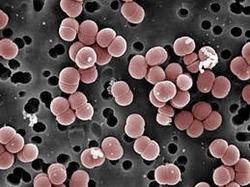Bacteria and Heart Disease
Introduction

By Morgan Miller
At right is a sample image insertion. It works for any image uploaded anywhere to MicrobeWiki.
The insertion code consists of:
Double brackets: [[
Filename: Microbewiki stuff-S.mutans aorta.jpeg
Thumbnail status: |thumb|
Pixel size: |300px|
Placement on page: |right|
Legend/credit: Electron micrograph of the Ebola Zaire virus. This was the first photo ever taken of the virus, on 10/13/1976. By Dr. F.A. Murphy, now at U.C. Davis, then at the CDC.
Closed double brackets: ]]
Other examples:
Bold
Italic
Subscript: H2O
Superscript: Fe3+
Heart disease is the leading cause of death among both men and women killing an average of 610,000 people every year.[2] Furthermore, new research suggests that it is not just caused by high levels of cholesterol in the body. Instead, our hygiene has an important role to play in whether or not we get heart disease. Specifically, researchers at the University of Queensland in Australia suggest that our microbial flora has just as much to do with our risk of heart disease as our diet does. So, what role does the human microbiome play in our risk of heart disease? More importantly, how does the human microbiome contribute to heart disease? The researchers suggest that cardiovascular disease (CVD) can be caused by periodontal disease-causing bacteria via their transport from the gum tissues other regions in the body such as the heart, all the while retaining their pathogenicity.2 Furthermore, this pathogenicity triggers an immune response that leads to platlet formation in the arteries near the heart leading to CVD and eventually heart failure if left untreated.[3]
Introduce the topic of your paper. What is your research question? What experiments have addressed your question? Applications for medicine and/or environment?
Sample citations: [4]
[5]
A citation code consists of a hyperlinked reference within "ref" begin and end codes.



Include some current research, with at least one figure showing data.
Every point of information REQUIRES CITATION using the citation tool shown above.
Section 2
Include some current research, with at least one figure showing data.
Section 3
Include some current research, with at least one figure showing data.
Section 4
Conclusion
References
- ↑ Avilés-Reyes, A., Freires, I. A., Rosalen, P. L., Lemos, J. A. and Abranches, J. (2017). Ex vivo Model of Human Aortic Valve Bacterial Colonization. Bio-protocol 7(11): e2316. DOI: 10.21769/BioProtoc.2316.
- ↑ CDC Fact Sheet of Heart Disease
- ↑ Ford, J. P., Do, L. H., and Leishman, J. S.Cardiovascular disease and the role of oral bacteria. 2010. J Oral Microbiol.
- ↑ Hodgkin, J. and Partridge, F.A. "Caenorhabditis elegans meets microsporidia: the nematode killers from Paris." 2008. PLoS Biology 6:2634-2637.
- ↑ Bartlett et al.: Oncolytic viruses as therapeutic cancer vaccines. Molecular Cancer 2013 12:103.
- ↑ Leonard, Jayne. “Enterococcus Faecalis: Infections, Transmission, and Treatment.” Medical News Today, MediLexicon International, www.medicalnewstoday.com/articles/318337.php.
- ↑ Kallstrom, G., Doern, C. D., & Dunne, W. M. (2010). Evaluation of a chromogenic agar under development to screen for VRE colonization. Journal of Clinical Microbiology, 48(3), 999–1001. https://doi.org/10.1128/JCM.02011-09
- ↑ unique biotech limited
Authored for BIOL 238 Microbiology, taught by Joan Slonczewski, 2018, Kenyon College.
